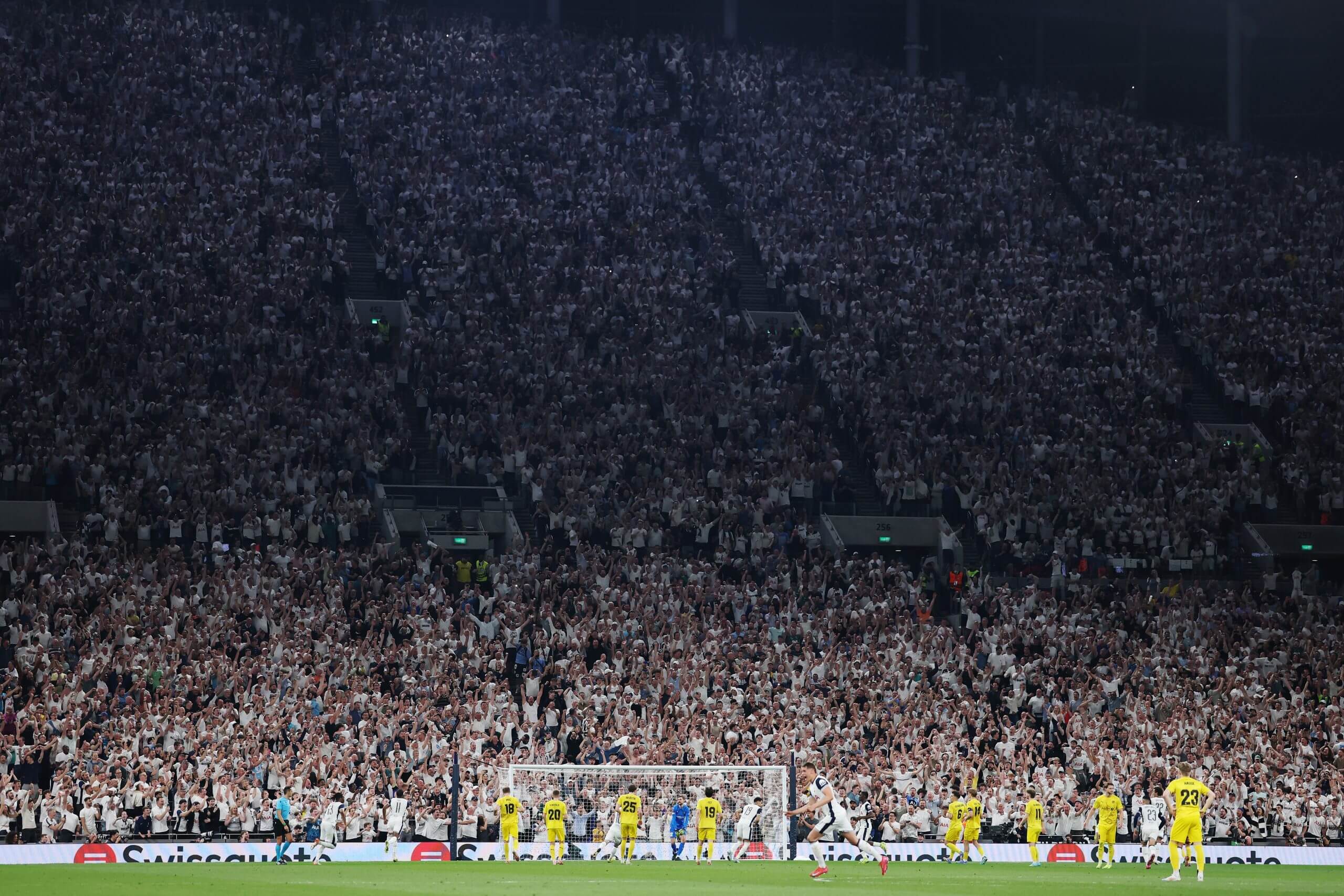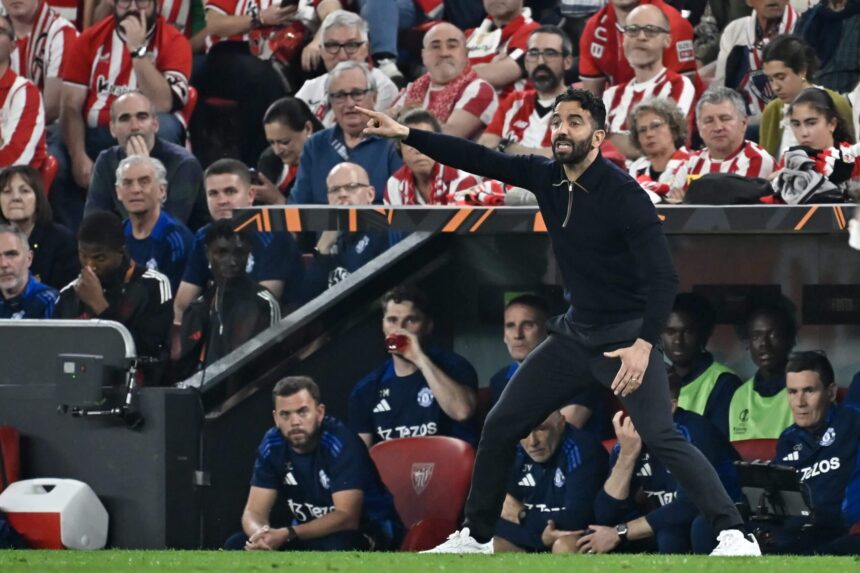After PSG burst Arsenal’s post-Real Madrid bubble in the Champions League on Tuesday, Thursday was England’s day in Europe.
In the UEFA Conference League, a heavily rotated Chelsea side hammered Djurgardens 4-1 on artificial turf in Sweden. In the Europa League, Manchester United produced one of the shocks of the competition, putting their five-game Premier League winless run behind them to beat Athletic Club 3-0 in Bilbao.
Advertisement
On the other side of the bracket, Tottenham Hotspur took care of business in north London, beating Norway’s Bodo/Glimt 3-1. Glimt are excellent at home, and the Arctic conditions and plastic pitch at the Aspmyra Stadion will act as a leveller in the second leg, but Spurs’ two-goal advantage makes them firm favourites to reach the final.
It won’t be the first time a Premier League club has come close to European glory in unusual circumstances — England has produced a few unlikely Europa League finalists over the years. In 2005-06, when the tournament was named the UEFA Cup, Middlesbrough reached the final while toiling in the league’s bottom half, finishing 14th. They knocked out AS Roma and FC Basel, among others, before losing 4-0 to Sevilla in the final.
Fulham’s run to the final in 2009-10 was arguably even more impressive, eliminating Italian giants Juventus 5-4 on aggregate in the Round of 16 despite only managing 12th in the league.
United and Tottenham’s status and financial strength meant they were both among the strong favourites to win the tournament before it started, but if they both make it to Bilbao’s San Mames Stadium on May 21, given their domestic struggles, it will rank among the Premier League’s most prominent displays of strength on the European stage.
Rubem Amorim’s domestic struggles have been forgotten in Europe (Ander Gillenea/AFP via Getty Images)
Both sides are on course for historically poor Premier League seasons. After taking a 5-1 battering away to Liverpool on Sunday, Tottenham can no longer mathematically finish in the top half — the first time they’ll finish outside the top 10 since 2008 (also, coincidentally, the last year they won a major trophy, the League Cup).
Since breaking the top four in 2009-10, Spurs have established themselves as a near-perennial top-six club, but having already lost 19 times in the league (a club Premier League record), the prospect of restoring pride in the league is gone and winning the Europa League is the only way to save their season.
Advertisement
Much of this narrative also applies to United, perhaps even unlikelier Europa League finalists. After a second-half collapse at Old Trafford in the quarter-final against Lyon, allowing the French club to come back from 2-0 down to lead 4-2 in extra time, United produced a fightback that was improbable even by their illustrious standards, scoring three times in seven minutes to win 5-4 on aggregate. Against all logic, both clubs, under the guidance of under-pressure head coaches, have displayed an ability to leave their weekend woes behind to step up on Thursday nights.
Should we be that surprised, though? The obvious caveat to any narrative regarding the “magic” of their European journeys, and the shock at seeing two teams who have struggled so badly in the Premier League stand on the cusp of a major trophy, is that Tottenham and United were the obvious favourites to reach this point given their financial strength.
The figures show that English top-flight clubs, particularly those in the ‘Big Six’, operate far above above their Europa League competitors in terms of their transfer kitty and salary budget. Indeed, their resources dwarf many of the continent’s most prominent “legacy clubs”.

Tottenham have a vast stadium – and resources (Ryan Pierse/Getty Images)
According to the Deloitte Money League, United’s revenue in the 2023-24 season of £655million (€770million; £$870m) made them the fourth richest club in the world. Tottenham, whose revenues totalled £523m are ninth. The next club from this season’s Europa League in this table are 20th-placed Lyon, with revenues of £224m.
This is also the first season under the new 36-club format where third-placed clubs from the Champions League have not dropped to UEFA’s secondary tournament, eliminating the chance of facing clubs who started in Europe’s premier club competition and may come closer to financial parity.
Advertisement
None of that, of course, will matter to the players or their coaches, both of whom have been under intense scrutiny given their Premier League records. The prospect of reaching a European final will also not be lost on the supporters, many of whom have travelled the country watching their clubs fail on a weekly basis. Irrespective of how likely their chances of reaching the final were before the first ball was kicked in September, the fact they’re on their way to one is remarkable given the wider context of their seasons.
Those at Old Trafford for the quarter-final second leg will be reluctant to assume the final is a formality, as will the Spurs fans who watched Glimt beat Lazio 2-0 in the quarter-final first leg in freezing temperatures Ange Postecoglou’s players are not accustomed to.
But if they meet in Spain on May 21 and Chelsea join one of them in lifting a European trophy in Poland a week later, this unlikely-ish meeting will perhaps be the most convincing display yet of the depth of quality in England’s top tier.
(Top photos: Casemiro, left, and James Maddison; Getty Images)








